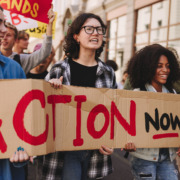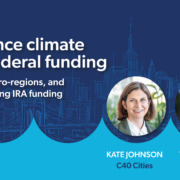Four climate action trends to watch in 2024
Amid the disappointment that more wasn’t achieved at COP28 and a spate of extreme weather events at the outset of 2024, we don’t want to lose sight of areas where progress has been made. Below we share four positive trends that we’re keeping an eye on in 2024.
1. A push for methane reduction
Reducing methane gas is the fastest way to address climate change in the short term. It’s 86 times more potent than carbon dioxide, warming the planet more quickly and intensely.
The gas has been getting more and more attention since the UN Climate Conference in Glasgow in 2021 (COP26), where over 100 countries committed to the Global Methane Pledge to reduce global methane emissions from 2020 levels by 30% by 2030. The momentum has been growing since, with countries at the UN Climate Conference in Dubai in December (COP28) announcing efforts and over $1 billion in funding to slash methane. Fifty oil and gas companies also committed to methane reductions, though critics say they are greenwashing.
Our municipal clients have a role to play. Solid and liquid waste are major sources of methane emissions. Cities can implement plenty of viable and affordable solutions to reduce these emissions, including composting organic waste, capturing landfill and wastewater treatment gases, and more.
2. Addressing heating to mitigate… more heating
Heating and cooling buildings requires lots of energy. With increasing incidents of extreme temperatures, demand for more and better heating and cooling systems is on the rise.
Cities reliant on fossil fuels for heating and cooling may worry about transitioning to electrification, fearing it will cause spikes in energy demand or that all-electric systems lack resilience. However, networked thermal energy systems, which use stored underground fluid for consistent heating and cooling, prevent demand peaks by deferring the heating or cooling of stored fluid to non-peak demand time.
Recently, New York State launched pilot projects that repurpose natural gas infrastructure for thermal energy networks, joining Colorado, Massachusetts, and Minnesota in providing state support for thermal energy networks. The pilots will serve as blueprints for municipalities to retrofit their fossil fuel infrastructure to achieve decarbonized heating and cooling solutions.
3. Carbon budgets are cool
We’re pleased to see more and more municipalities worldwide implementing carbon budgets as an accountability tool for climate action. Carbon budgets—or climate budgets as they’re sometimes called—set a cap on how much a community can emit—ever—and divide that limit into annual caps. The concept, which was created by the City of Oslo, is gaining traction worldwide, including in Canada, where Montreal is our latest client to set one.
4. A move towards regional collaboration
More and more, policymakers are pushing for collaboration between governments at regional, state, and national levels. In the US, the structure of federal climate funding requires regional climate action planning (and we’re stoked to be working on such projects in Nevada, Louisiana, Michigan, Ohio, South Dakota, California, and elsewhere).
At COP28, cities had more presence on the agenda than ever before and 78 countries, including Canada, Chile, and the US (countries where we have offices) formally acknowledged the role of cities in climate action through the Coalition for High Ambition Multilevel Partnerships. The summit’s final agreement emphasized the role of local and subnational governments in responding to the climate crisis.
We hope this push for collaboration will inspire regional and national levels of government to take inspiration from their cities, which, in many cases, have set more ambitious climate action goals and are further along in taking action.
_
To learn more about how SSG can support your community or organization to jump on these 2024 trends, give us a shout via our contact page.









